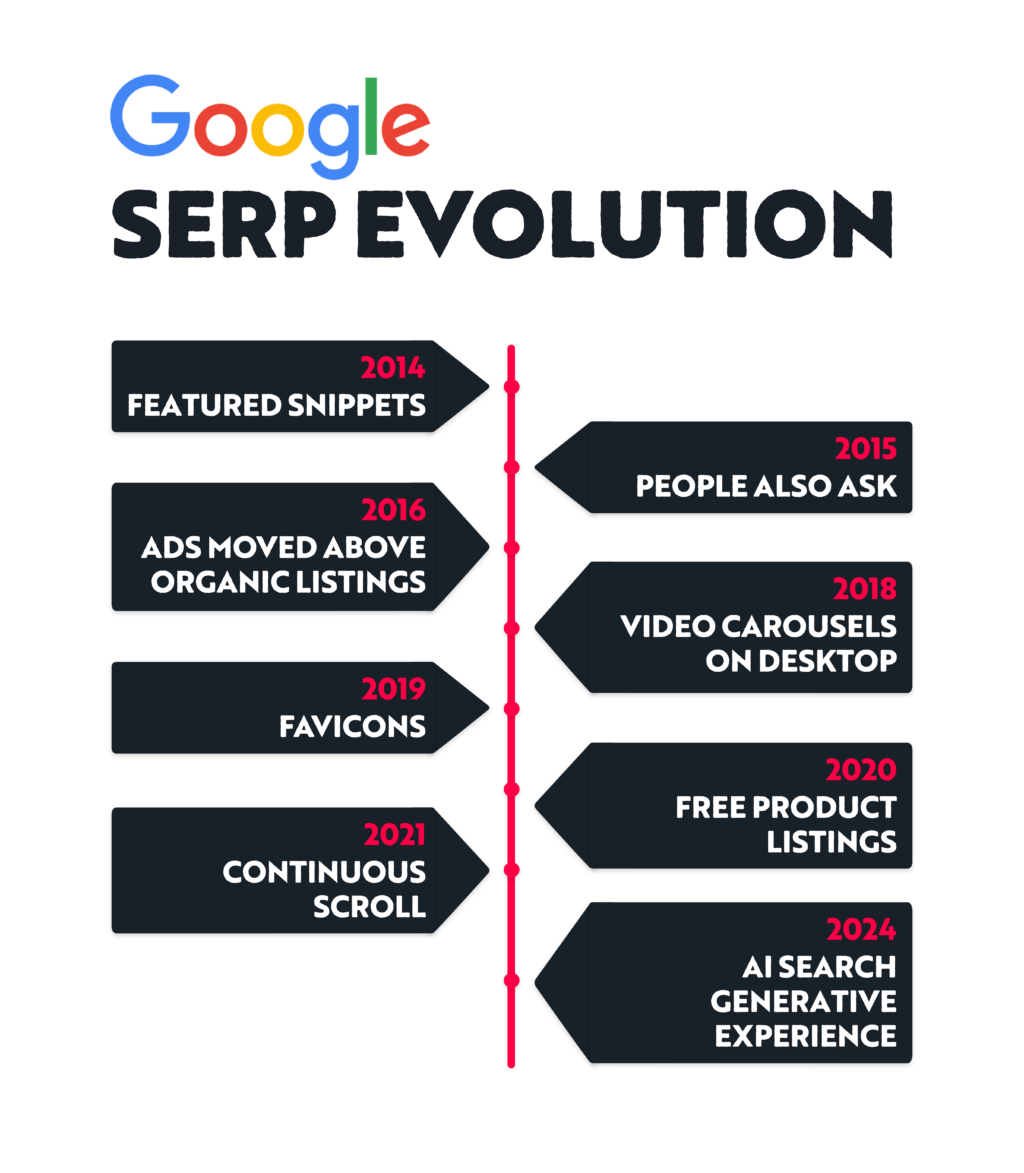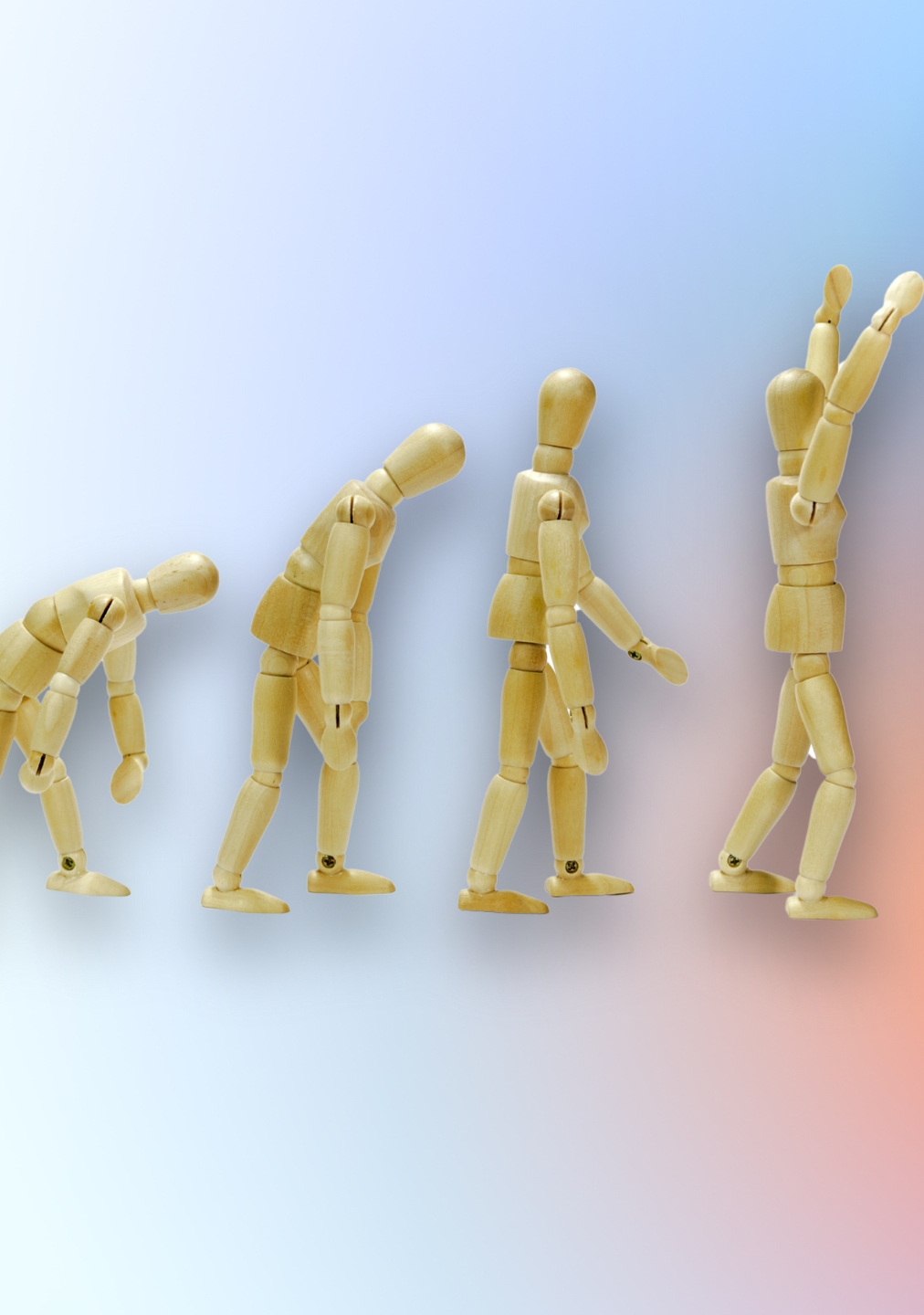It’s crazy to think how much Google SERPs have changed over the past ten years. Google is constantly testing new features to provide users with the most relevant results based on their search queries.
From the days of simple organic listings and text ads in the sidebar to free product listings and AI search generative experience, are you ready to go on a journey through the SERP ages?
Search Results Page in 2014
Let’s cast our minds back to 2014, when, quite frankly, the search results were much simpler.
If you searched for something like shampoo back in 2014, you would see organic listings straight away with ads on the right-hand side. There were also modifiers for the search results, including images, maps, news, and timeframes. Those were the days of no fuss or frills, just good ole organic listings and obviously placed ads.
However, slowly but surely, year after year, Google’s SERPs have evolved, and they certainly don’t look like that today.
SERP features from 2014 to 2024
Here’s a brief overview of some of the biggest SERP feature additions to Google search results over the last ten years.
- 2014 – featured snippets
- 2015 – people also ask
- 2016 – ads moved above organic listings
- 2018 – video carousels on desktop
- 2019 – favicons
- 2020 – free product listings
- 2021 – continuous scroll
- 2024 – AI search generative experience

Featured snippets
One of Google’s most notorious features was first introduced in late 2014: the legendary featured snippets.
Imagine getting your answer straight from the search results page, no clicks needed. Well, that’s exactly what featured snippets do. They provide a direct answer to the search query and showcase it at the very top of the page.
The information is taken directly from a website with a link provided to the specific page. Nowadays, featured snippets appear in a variety of different formats, from lists to tables to simple paragraphs. They hold the top spot in the SERPs, appearing above the organic listings, and can lead to a high click-through rate.
People Also Ask
In 2015, Google rolled out People Also Ask, a feature designed to enable users to find related answers to their queries.
They are displayed as a short list of questions. When you expand the question, you will be presented with relevant information and a link, just like a featured snippet. The PAA feature doesn’t always appear in the same place, as it depends on the search query and other SERP features.
Google is always looking to provide the best answer to every user’s search query, and People Also Ask is an invaluable SERP feature for this goal. It provides a seamless way to delve deeper into a particular topic without leaving the search results, often referred to as zero-click marketing.
Ad Placement
2016 was the year when the game changed for ad placement. Google made a bold move, shifting the text ads from the right sidebar to now only appear at the top of the page, right above the organic listings.
What did this result in? Yep, you guessed it: it nudged those organic results further down the page. Little did we know this would only be the start. But Google didn’t just fancy playing a bit of Tetris for no reason; removing ads from the sidebar enabled Google to make room to show paid product listings, enabling them to show more ads in the same space.
Video Carousels
With the rise of video content, Google decided it was time for a change in how they presented videos in the search results.
Until 2018, videos were displayed as organic listings with a preview image like any other SERP link, but then in came video carousels. There is still a preview image, but the videos have their own dedicated section away from the organic listings. This was first rolled out on mobile, and then it took a little while to be released on desktop.
Favicons
Favicons were first introduced on mobile in 2019 and finished rolling out for desktop in 2020. If you’re not familiar with favicons, they’re small icons that are used on a website to identify your brand. They appear next to the title in your tab, making it easier for users to identify your website over others if they have multiple tabs open. They can also be a great way to increase click through rate if you have a well-known brand.
For instance, if a user is comparing different fuel suppliers, they might have several tabs open to carry out their research. A company’s favicon that a user recognises may be the difference between someone enquiring with them over a competitor.
Free Product Listings
In 2020, Google did something that perhaps shocked all marketers… it provided a free marketing opportunity. It did this by introducing free product listings for Google shopping. Whilst free listings don’t get as much of the spotlight as paid listings, they do appear on Google, and if they’re free, why not give them a shot? This is particularly helpful for e-commerce businesses, such as Athena Games, a game shop in Norwich that sells a variety of card and board games online. Thanks to free product listings, they can increase their brand awareness and advertise their products more widely across the SERPs, all without spending a single penny.
This SERP feature was a very smart move from Google too. Since it’s free, businesses are more likely to give it a try, leading to more people using Google ads and Google merchant centre. If they see success with their free listings, they may start to wonder what they could achieve if they put some money into the ads. Before you know it, Google has more people investing in paid ads.
Continuous Scrolling
2021 saw the end of pagination and the rise of continuous scrolling.
It was first rolled out to mobile and then to desktop in 2022. Continuous scroll works by automatically showing you more results when you reach the end of the page. When you reach page 6, you have to click ‘more results’ to be shown further results, which is why it is called continuous scroll rather than infinite scroll.
Generative AI Search
So, what’s new with Google’s SERP features? Well, this is where AI comes in.
Google’s new generative AI in search has already begun rolling out in the US and is set to roll out in other countries throughout 2024. AI search is geared up to do most of the legwork; you just ask it your query, and it will tell you the most suitable answer in the form of an AI overview.
Today, people want answers quicker and don’t have time to trawl through different pieces of information. This is where AI search is supposed to come in. Forgive us for using the word ‘supposed to’; we just know AI can be a bit temperamental at times. Only time will tell if this SERP feature catches on.
What’s next for SERP?
The search results have definitely come a long way since 2014. Google’s aim is to always provide users with the most relevant information in line with their search query and be the ultimate source of information. It is constantly analysing user behaviour and data to identify ways to improve its user experience, so who knows where the search results will go next? Our bet is that Google will introduce even more AI features, but will they be suitable for the user? That’s the real question.
Google changes quickly, and it’s our job to roll with the punches. If you want to stay up-to-date with the what, the how, and the when in the world of search engines, give our socials a follow or check in on our super helpful blog page.
For help with your own digital marketing, trust the experts (that’s us). We’ll stay on top of Google’s changes for you, always ensuring your site is optimised for whatever they throw out next. Call us on 01603 859007 and speak to our fab team today, and let’s get your online marketing strategy sorted.
